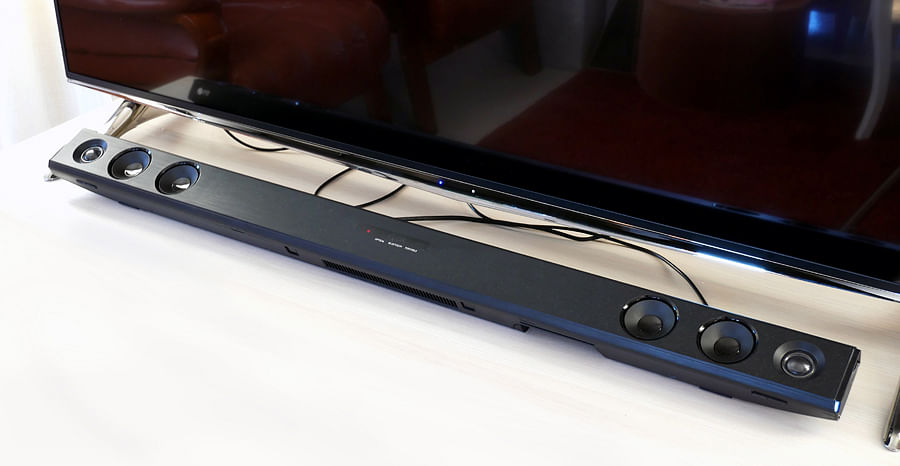
These are the days of multi-channel surround sound movie viewing. A lot of enthusiasts are setting up home theatres for a fulfilling entertainment experience.
A home theatre set-up can be pretty inexpensive if one is not interested in audiophile sound. A set of 5.1 home theatre speakers can be bought for as low as Rs 3,000-4,000. The upper limit for setting up a dedicated home theatre room can run into lakhs of rupees.
Setting up a dedicated home theatre requires planning and a lot of equipment. There are people who do not like the idea of having speakers all over the room. One solution for this is to use a soundbar.
A soundbar is a narrow rectangular, horizontally placed, loudspeaker and has two or three speaker drivers. They have built-in amplifiers and are sold with various power output specifications. These are called active soundbars. Those without in-built amplifiers are called passive soundbars and require an external amplifier. Needless to say, active soundbars are more convenient as the amplifier and speaker come in one compact package.
A general rule is to buy a more powerful soundbar for a bigger room. Most manufacturer websites or retailers will be able to recommend the optimal amplifier power for the room the soundbar is intended to be used in.
Old CRT television sets were big and there was enough space for good quality speakers that fired sound directly at the viewers/ listeners.
Quite often, today’s LED TV sets do not have the best of speakers. With TV bezels becoming increasingly small, the internal speakers have to be placed on the sides or at the bottom. This does not always give the best sound as the speakers are firing away from the viewers/ listeners. In this scenario, soundbars are great devices to have for good sound. They can be connected to the TV set via Bluetooth, HDMI, optical or even a 3.5mm audio cable.
As soundbars have small speakers, the bass (low frequency sounds) may not be that great. In order to compensate for that, audio manufacturers have now begun to pair subwoofers with the soundbar. While the main soundbar takes care of the middle and high frequency music reproduction, the subwoofer will take care of reproducing low frequencies, which is where the thunderous sound is.
Such soundbars will often have three speakers to represent the left, centre and right channels speakers like in a regular home theatre system.
To take advantages both from soundbar and stereo set system, some manufacturers produce soundbar hybrids in which there are left, centre, and right speakers and rear left and right speakers that are connected wirelessly.
Digital technology has made its way into almost every gadget we use in our daily lives. Slightly more advanced soundbars have digital signal processing (DSP) that can give the feeling of surround sound in a room. This could sound good, but cannot really replicate the sound of a dedicated home theatre speaker system.
Soundbars can cost as little as Rs 1,000. Better quality soundbars from reputed brands will cost about Rs 4,500 on e-commerce websites and it could go up to Rs 80,000 or more for high-end ones.